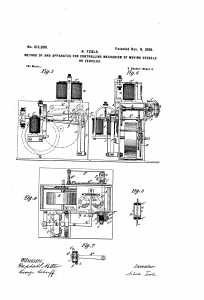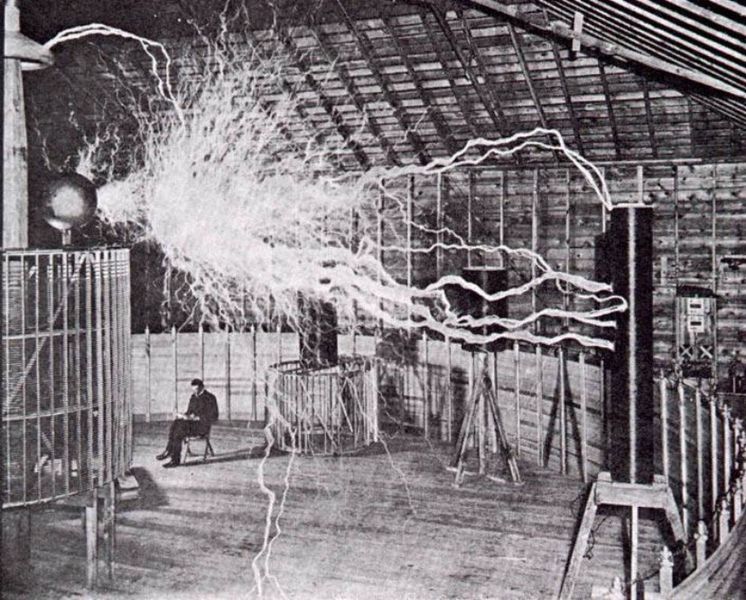Long before patenting an early drone system in 1915, Nikola Tesla was enabling a method for push-button war, which he envisioned as a way to scare the world into an endless state of ceasefire. Of course, it hasn’t worked out that way. The opening of a post by Steven Beschloss at the New Yorker blog:
“In September, 1898, at Madison Square Garden, Nikola Tesla revealed a new invention: a radio-controlled torpedo boat. It was the first demonstration of wireless remote control in history, and it caused, in Tesla’s words, ‘a sensation such as no other invention of mine has ever produced.’ Some witnesses believed that the Croatian inventor was using mind control.
 Detailed in his patent, No. 613,809, a ‘Method of and Apparatus for Controlling Mechanism of Moving Vessels or Vehicles,’ Tesla demonstrated how radio signals can remotely trigger switches and direct a vehicle’s movement without ‘intermediate wires, cables, or other form of electrical or mechanical connection with the object save the natural media in space.’ While Tesla recognized a wide list of applications for his remote-controlled robots, including transporting objects to distant locations and establishing communication with and exploring ‘inaccessible regions,’ he presciently, albeit optimistically, zeroed in on the military potential of his invention. ‘The greatest value,’ he wrote in his patent application, will be its use in armaments and warfare, ‘for by reason of its certain and unlimited destructiveness it will tend to bring about and maintain permanent peace among nations.’
Detailed in his patent, No. 613,809, a ‘Method of and Apparatus for Controlling Mechanism of Moving Vessels or Vehicles,’ Tesla demonstrated how radio signals can remotely trigger switches and direct a vehicle’s movement without ‘intermediate wires, cables, or other form of electrical or mechanical connection with the object save the natural media in space.’ While Tesla recognized a wide list of applications for his remote-controlled robots, including transporting objects to distant locations and establishing communication with and exploring ‘inaccessible regions,’ he presciently, albeit optimistically, zeroed in on the military potential of his invention. ‘The greatest value,’ he wrote in his patent application, will be its use in armaments and warfare, ‘for by reason of its certain and unlimited destructiveness it will tend to bring about and maintain permanent peace among nations.’
Less than two decades later, during the First World War, the Germans employed a remote-controlled motorboat packed with explosives and attached to an unspooling wire.”
Tags: Nikola Tesla, Steven Beschloss

